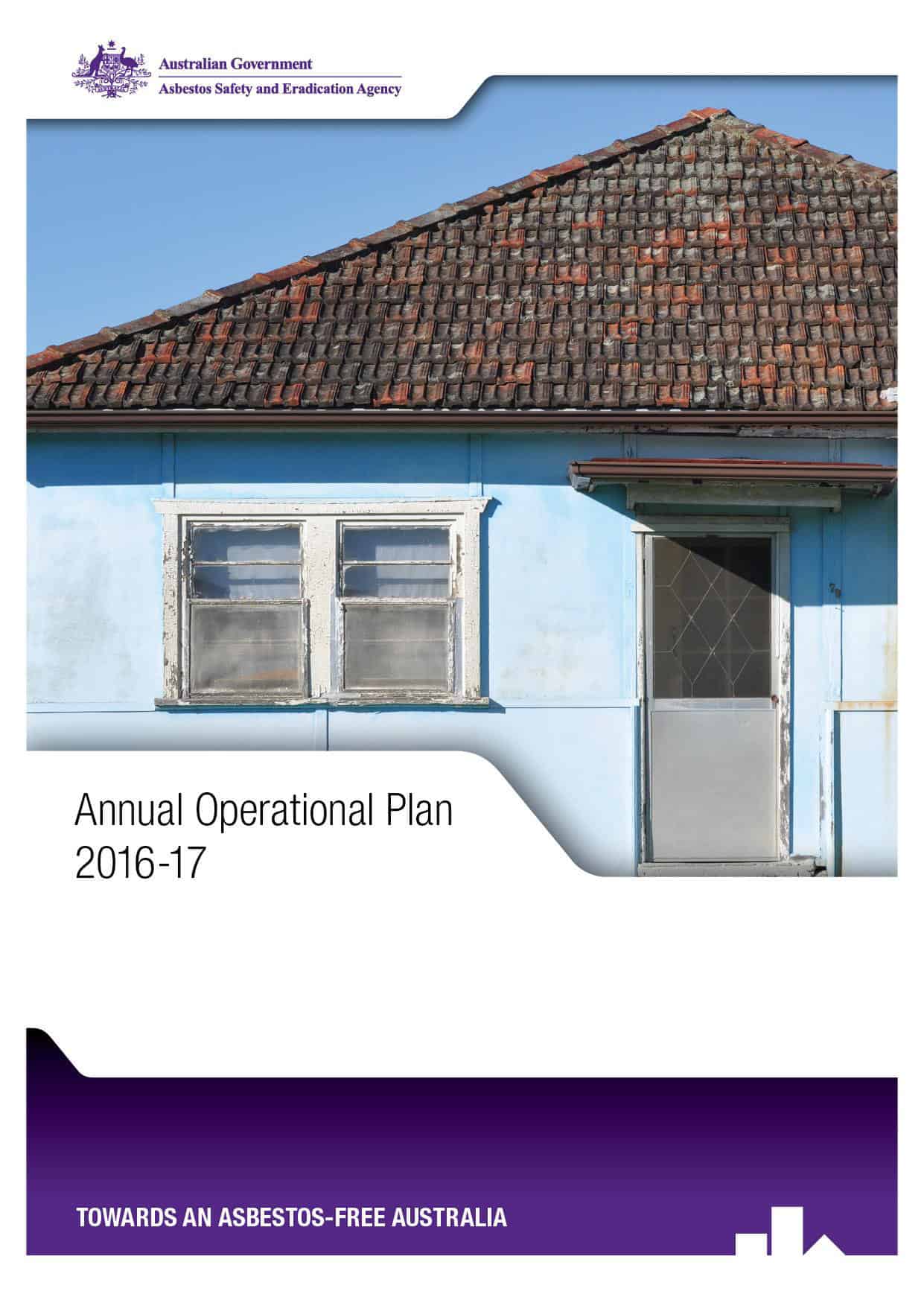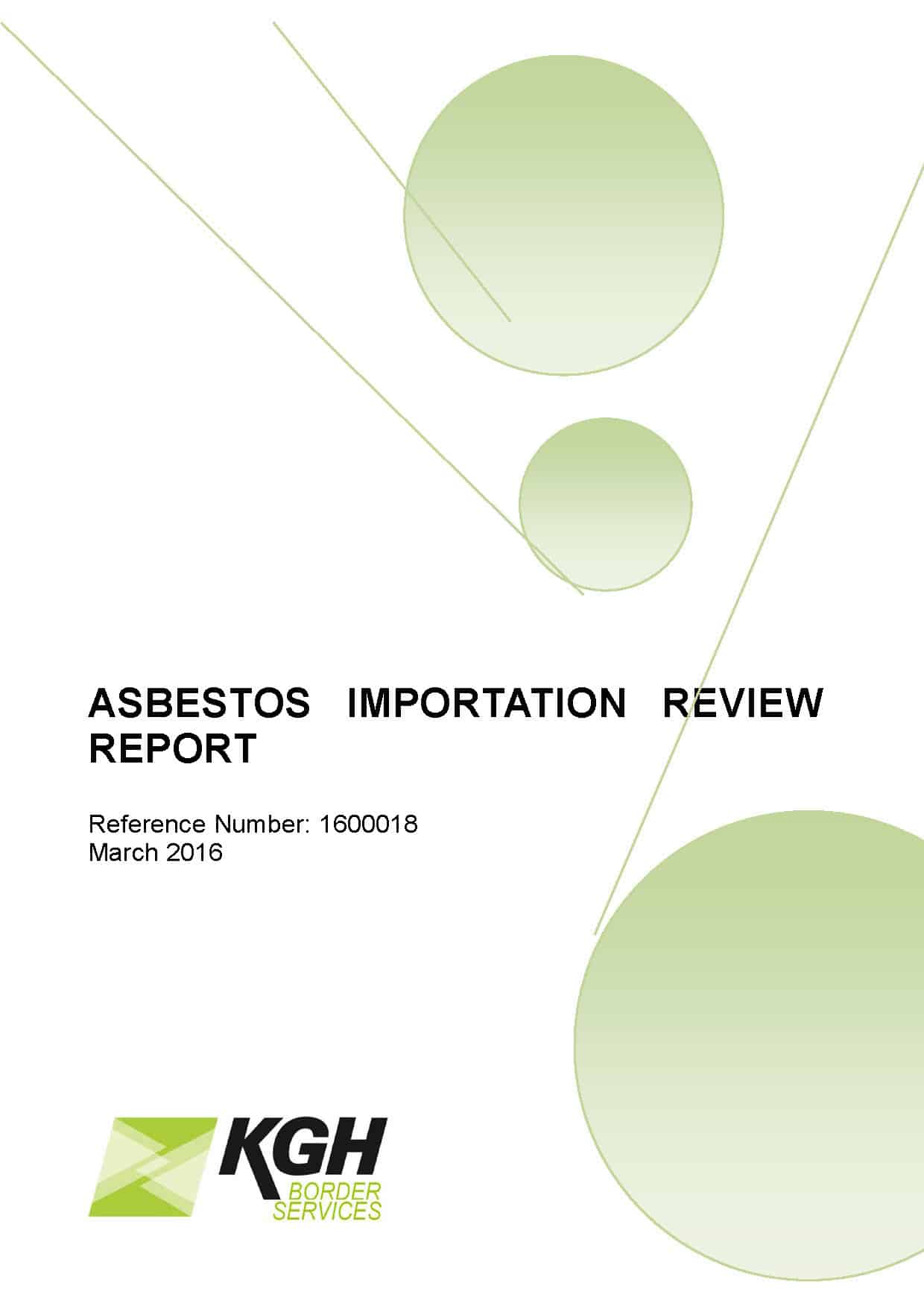 If occupational health and safety (OHS) is to include the “whole-of-life” for workers, companies, products and projects, OHS professionals need to expand their pool of knowledge to meet the demands for an inclusive organisational culture. One recent research paper supports this approach by looking at the return to work of cancer survivors.
If occupational health and safety (OHS) is to include the “whole-of-life” for workers, companies, products and projects, OHS professionals need to expand their pool of knowledge to meet the demands for an inclusive organisational culture. One recent research paper supports this approach by looking at the return to work of cancer survivors.
Category: cancer
OHS and Professor Lin Fritschi
 Professor Lin Fritschi is a cancer epidemiologist with a particular interest in occupational causes of cancer. Lin’s work often pops up in the occupational health and safety (OHS) sector and research journals but SafetyAtWorkBlog has never met her and wondered what she thought about OHS.
Professor Lin Fritschi is a cancer epidemiologist with a particular interest in occupational causes of cancer. Lin’s work often pops up in the occupational health and safety (OHS) sector and research journals but SafetyAtWorkBlog has never met her and wondered what she thought about OHS.
This article is the latest in the series of hearing different voices from academics and prominent workplace safety people.
Asbestos presents political opportunities for vision and leadership
Asbestos is not something this blog writes about often, principally because the risk of asbestos-related diseases is well established and the control measures identified. Ideally asbestos should be left in the ground as, no matter in what state it is used, it presents a serious hazard to someone wherever it has been mined or used. But few countries are willing to make this commitment and even if they do asbestos-containing materials (ACM) continue to be imported regardless of any bans in place, as Australia is currently experiencing.
This fundamental occupational health and safety (OHS) and public health issue is not helped when prominent figures utter dangerous misrepresentations. MotherJones has pointed out that in his co-authored 1997 book, The Art of the Comeback, now United States Presidential-hopeful Donald Trump described asbestos as
“the greatest fire-proofing material ever used.”
That asbestos is
“100 percent safe, once applied,” and “got a bad rap.”
The quotes are 19 years old so Trump may have achieved a different perspective on asbestos and it would be good to have someone pose the question, perhaps in the next debate, although he may simply deny he ever said that. (He would be technically right, he never said it, he wrote it)
 Australia does not have a Trump but it does have an Asbestos Safety and Eradication Agency (ASEA) and only last week the Minister for Employment, Senator Michaelia Cash (great name for a politician giving out money), gave the agency an
Australia does not have a Trump but it does have an Asbestos Safety and Eradication Agency (ASEA) and only last week the Minister for Employment, Senator Michaelia Cash (great name for a politician giving out money), gave the agency an
“additional $3.4 million over two years in the 2016-17 Budget”.
This was a timely increase, at least politically, to counter the continued importation of a banned substance as mentioned above. However, the allocation of this money to the ASEA misses the target. ASEA does not control the importation of building products; that is the job of the Australian Border Force.
ASEA released its Annual Operations Plan 2016-17 at the end of September in which it addresses the asbestos importation issue:
“ASEA works with all levels of government to assist in responding to the strategic risks of asbestos in Australia. The agency coordinated the development of a Rapid Response Protocol through the Heads of Workplace Safety Authorities (HWSA) Imported Materials with Asbestos Working Group. The protocol is the first of its kind, enabling government agencies to work cooperatively and efficiently across jurisdiction and portfolio lines when products have been identified as containing asbestos. This allows agencies to work through the practicalities of concerns that such products may cross, or have crossed, state lines.”
This national and cross-agency cooperation is good and required but “the practicalities of concern” is the major barrier to change. Government never seems to have sufficient funds to make a ban as effective as possible or it needs to be. Allowing ACM into Australia, even though the building material contains a government-banned substance, creates costs on public and occupational health but as these costs are further down the supply chain and may not appear for decades, Government considers them to be acceptable. It is highly unlikely that the cost of preventing ACMs at the border would be more expensive than the long-term health costs that the Government will need to pay through public health and hospitals and that employers may need to pay through lost productivity, business disruption and workers’ compensation. (This is another example of why OHS need economists and financial estimators.)
 In February 2016, Minister for Border Protection, Peter Dutton, announced an inquiry into the importation of ACMs, to be conducted by KGH Border Services, a company with which the Minister’s Department has been in a partnership since early 2015. The final report seems to imply that the issue is too difficult to police and that the current process is the best the Government can do, particularly as a large part of the asbestos problem originates in China, Australia’s most lucrative trading partner.
In February 2016, Minister for Border Protection, Peter Dutton, announced an inquiry into the importation of ACMs, to be conducted by KGH Border Services, a company with which the Minister’s Department has been in a partnership since early 2015. The final report seems to imply that the issue is too difficult to police and that the current process is the best the Government can do, particularly as a large part of the asbestos problem originates in China, Australia’s most lucrative trading partner.
“For most businesses involved in international trade, a rational cost/benefit analysis of investment in compliance is not justified by the incentives that government offer to promote voluntary compliance. Despite the critical effect of asbestos exposure to public health and safety, it remains a cheap and effective material for use in a wide range of goods. Asbestos continues to be widely used internationally, and is incorporated in goods manufactured by Australia’s largest trading partners, such as China.”
This paragraph from the KGH report illustrates the tone of the report. Asbestos is cheap and effective and used widely, however it is also deadly. As mentioned above, asbestos and ACM is only cheap to purchase but can have decades long costs that would/should render the cheap purchase a nonsense. That asbestos is effective echoes Trump’s position.
The report also states:
“Due to the differing standards applied to asbestos regulation internationally, it may be inefficient for suppliers that sell to a range of markets, to ensure compliance with the Australia’s strict import prohibition. The Australian prohibition relates to all forms of asbestos, but chrysotile is not internationally recognised as a dangerous form of asbestos. Countries that mine chrysotile maintain that it is safe, and continue to export it to a number of other countries, where it is still widely used in products that supply a range of industries.”
Regardless of what other countries do, Australia’s Department of Health identified the hazard of chrysotile asbestos as early as 1999 and has stated for some time that:
“There may be no safe exposure level for chrysotile, so all exposure should be avoided” and
“If a safer product or process can be substituted for one involving chrysotile, this should be done.”
According to KGH Border Services chrysotile is not internationally recognised as a dangerous form of asbestos. So what? The government that commissioned the KGH report has stated it is dangerous!!??
The KGH report also outlines what is already known and the reason for the existence of the ASEA:
“There is also confusion about policy and regulatory responsibilities across Government in Australia and some ambiguity in the overarching legal framework that establishes Australia’s strict prohibition. The Department of Employment (DoE) has policy responsibility for the legal framework that establishes the border control. The DIBP administers the import and export prohibitions at the border. The Asbestos Safety and Eradication Agency (ASEA) is responsible for administering the import and export permission regime on behalf of the Minister for Employment. The Australian Competition and Consumer Commission (ACCC) and state and territory work, health and safety (WHS) regulators have a role in enforcement of the asbestos prohibition domestically. This cross-over between various Commonwealth and state and territory authorities can confuse the public’s perception of the DIBP’s role in asbestos regulation, and its ability to affect changes to the legal and policy frameworks that establish the prohibition. Clarification of the responsibilities and coordination efforts across Government would reduce this confusion and increase the effectiveness of the Government’s response to asbestos issues.”
If asbestos was not killing Australian workers and their families, it would be funny that overlapping and conflicting responsibilities (a responsibility managed by the Government) “can confuse the public’s perception of the DIBP’s role in asbestos regulation”. The public may not understand the role of the DIBP but it certainly understands the fatal risks associated with asbestos. The calls from the public and the unions for stronger policing of banned substances is less a criticism of the Department of Immigration and Border Protection (DIBP) that it is a criticism of the Government for inaction.
The report also suggests that other levels of Government should be pulling their weight on asbestos management. They should, and they are, but how much easier, cheaper and more productivity their jobs would be if the Federal agencies prevented ACMs entering the country. It just may be possible to eliminate the established asbestos hazards if new asbestos was stopped being imported.
It may also be useful to note that Minister Dutton seems to see the call for controlling asbestos imports as a trade union conspiracy. One could just as well claim that safe asbestos is a Trump conspiracy.
The Australian Government is mismanaging the latest controversies around the importation of asbestos-containing material but to manage it appropriately requires hard questions that this government chooses not face. The deaths associated with asbestos exposures are increasing and are likely to for some decades yet. How many decades, is the choice of this Government. Act now and seriously and fewer people will die, businesses will be more sustainable, health and compensation costs will be less. In fact there may even be more jobs and growth.
Politicians are regularly called on to provide vision. Asbestos seems to be one of those issues where the vision can be readily understood and easily explained. Addressing the issue in a serious way could also be seen as an example of leadership and the basis for a political legacy. And it is not as if asbestos is irreplaceable. Trump may see it as a miracle building material but the combination of new products with safety in design principles should be able to achieve a comparable fire protection level.
Vision and leadership. Where have we heard those words before? Oh yes, EVERYWHERE.
Cancer data needs to start a discussion on effective controls
 The Cancer Council of Western Australia has released a report (not yet available online)that states:
The Cancer Council of Western Australia has released a report (not yet available online)that states:
“The number of occupationally caused cancers compensated each year equates to less than eight per cent of the expected number.” (Executive Summary)
This is an extraordinary statistic but consistent with the history of occupational health and safety (OHS) statistics where the core data originates from compensation figures rather than incident figures. Cancer has always been a challenge in this area as it can manifest years after exposure or not at all. But this report also provides important data, and a challenge, for OHS professionals and business owners as
“Occupational exposures to carcinogens are estimated to cause over 5,000 new cases of cancer in Australia each year.” (Executive Summary)
The report has an excellent discussion on why such statistics are estimates and the unreliability of previous data in Australia and overseas but there is only a short, but important, discussion about risk and hazard controls – the principle focus for OHS professionals. Continue reading “Cancer data needs to start a discussion on effective controls”
Chronic asbestos deaths, sudden mining disasters – both indicate deep corporate problems
It is less than a week until the premiere of Devil’s Dust, a movie about asbestos in Australia and the corporate maneuverings of James Hardie Industries to minimise its exposure to compensation claims but its lessons spread beyond asbestos to politics, corporate responsibility and individual morality.
In a recent article on the movie, the depiction of then New South Wales Premier, Bob Carr, was mentioned. The politics of asbestos is well shown in the Carr depiction. The asbestos issue seemed to have little importance until a political value was placed on the issue. Carr, a Labour Party politician, then acted, met people affected by asbestos-related diseases and made clear statements of moral significance about asbestos and corporate responsibility.
Recently Crikey reminded its readers of some comments on asbestos compensation from 2007. Apparently, the now-Deputy Leader of the Liberal Party, Julie Bishop stated
“I have enormous sympathy for those who suffered asbestos-related diseases,” she said in a statement to The Australian. “There were members of the CSR executive management team who also died of asbestos-related diseases who had worked at Wittenoom.
“As one of the lawyers in the case, I acted ethically and professionally at all times in accordance with client instructions.” [link added]
There is no doubt that Bishop acted ethically and professionally in her role as a lawyer but by 2007, the issue of asbestos exposure and compensation had moved to a moral basis. Are companies who resist providing compensation for illnesses caused by their products being heartless or responsible corporate citizens? Continue reading “Chronic asbestos deaths, sudden mining disasters – both indicate deep corporate problems”
Devil’s Dust – Australian movie on asbestos and corporate morality
On November 11 and 12 2012, the Australian Broadcasting Corporation will broadcast “Devil’s Dust”, a two-part movie about asbestos in Australia. This is not a documentary on asbestos-related diseases. It follows the story of investigative journalist Matt Peacock from the 1970s to the present day in parallel with the corporate machinations of James Hardie Industries and its former CEO, John Reid and the life, times and death of Bernie Banton.
To many Australians, bits and pieces of each of these narrative streams will be familiar but Devil’s Dust illustrates the moral linkages between these streams leading to a powerful story of corporate greed, strength of character and man’s inhumanity to man. The workplace safety context of Devil’s Dust is obvious – ignoring or hiding information about harm to workers, the management of many workplace risks through allowances and “danger money”.
The television production values depict the times perfectly and for those who know of the asbestos risks, particularly readers of Matt Peacock’s book “Killer Company” which inspired the movie, the opening few seconds summarise major issues in the asbestos story – sacks of asbestos on a truck, cigarette smoking and dust being bashed from work clothes. Later in the first part, other issues are touched on – the washing of asbestos-contaminated work clothes by wives, asbestos in trains, asbestos in carpet underlay and asbestos used as road toppings. Continue reading “Devil’s Dust – Australian movie on asbestos and corporate morality”
Vulnerability and arrogance
“How can this be allowed to happen nowadays?” the distressed wife of a seriously injured worker asked me recently. Her husband was sitting next to her, his eyes still victims of the recent terror that nearly killed him. She saw that and struggled to join him in his very dark and personal space. This now would become a life time job for her.
This meeting captured for me one of the most fundamental factors at most workplaces. That workers’ most common feeling at work is that of vulnerability. Of course many workers find comfort and pride in their job. Of course it feeds them and their families. Of course it can provide personal identity and purpose. And of course there are many managers who understand all this.
But it’s also true that much too often this is not the case. That’s one reason why when suddenly factories or mines close, or car manufacturers ‘shed’ 200 workers, or car part factories go bust workers are not only shocked, but it substantiates their sense of vulnerability, “What a shock, I thought they loved us!”
Not only is this painfully evident when a negligently poor H&S standard results in crippling a worker for life, but is typically present on a daily basis. Permanent fear of job loss results. The fact that a worker can be disciplined or sacked for a number of events that can be defined and redefined by creative managers feeds that feeling. That’s another reason why so much bullying and humiliation occur and so much stress is experienced. Continue reading “Vulnerability and arrogance”

